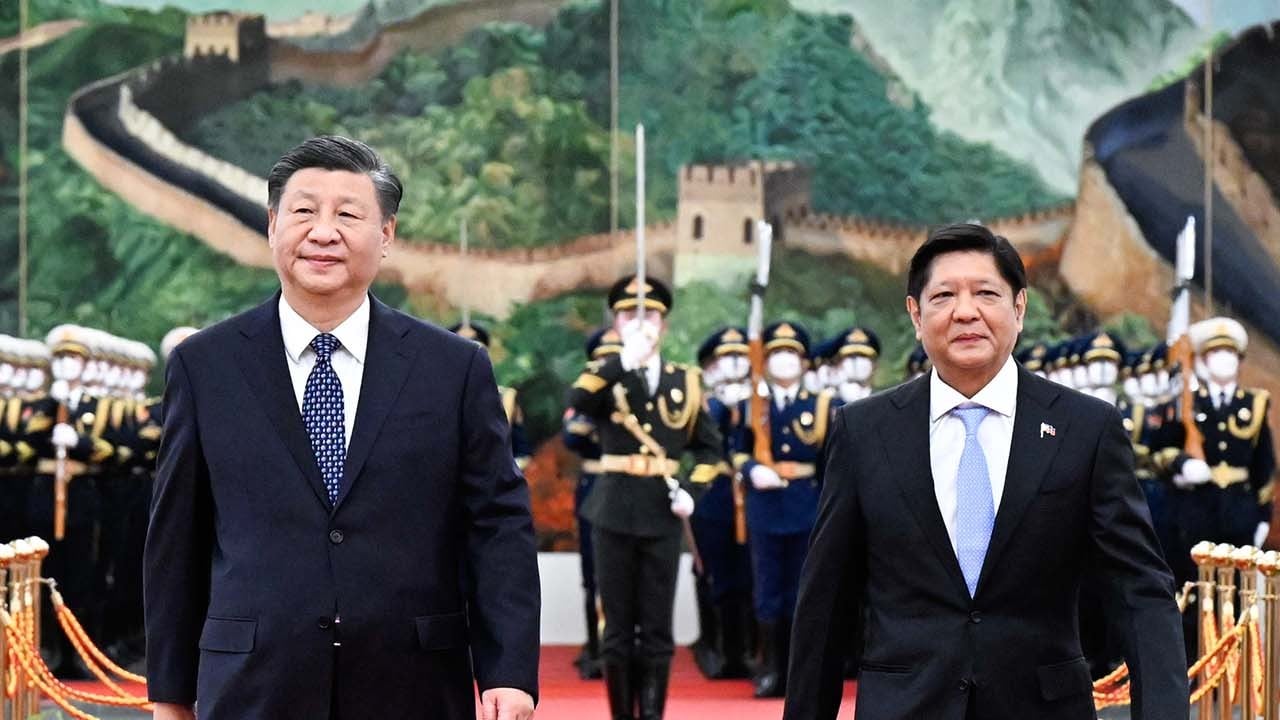
South China Sea: is India abandoning neutrality by backing Manila on Hague ruling?
- Without naming China, New Delhi voices support for the Philippines in 2016 arbitration decision rejecting Beijing’s claims in contested waters
- While some analysts say this signals India is shifting to align with US, others say it will avoid taking sides in wider regional disputes
India, which has built closer economic and security ties with the United States, has steadily made its presence in the South China Sea felt in recent years, they noted.
US targets Asean partnership to ‘push back’ on China actions in South China Sea
By publicly favouring the Philippines’ claim, India is trying to “get involved” in South China Sea disputes as it moves closer to the US, which is involved in an intense competition with China, according to Chen Xiangmiao, a research fellow with the National Institute for South China Sea Studies.
In 2016, a tribunal at the Permanent Court of Arbitration in The Hague ruled in favour of the Philippines, finding China’s claims to historic and economic rights in most of the South China Sea had no legal basis.
Beijing did not take part in the arbitration, and said it would not accept or comply with the court’s decision. Instead, it insisted that territorial disputes should be resolved only between rival claimants.
“The arbitration ruling is very specific about the claims of China and the Philippines,” Chen said. “It appears that India is adjusting its stance on the South China Sea, especially on specific issues, and to align with the US.”
As India took a tougher stance on the maritime dispute, it might also have an eye on its border stand-off with China, Chen added.
For a long time, India has avoided taking sides in South China Sea territorial disputes, which involve conflicting island and maritime claims by Brunei, China, Indonesia, Malaysia, the Philippines and Vietnam.
At the time of the ruling, Delhi did not take a clear position on the issue but called on the countries to resolve their disputes “through peaceful means”.
“This could explain why the joint statements of the Quad usually go as far as calling for adherence to international laws, but the other three countries – Japan, the US and Australia – would lash out at China in their own joint statements after holding their trilateral meetings,” Chen said.
But that could be changing, Chen said, noting that a day before the meeting between the Indian and Philippine foreign ministers, Daniel Kritenbrink, the US assistant secretary of state for East Asian and Pacific affairs, told diplomats and academics at the Washington-based Centre for Strategic and International Studies that the US expected a greater partnership with India in the South China Sea.
Earlier, the Indian Navy said it was giving Vietnam, which has maintained close security ties with India since the Soviet era, an active duty missile corvette. Vietnam has been the most vocal critic of China’s claims in the strategic waterway, and tensions between Hanoi and Beijing over the contested waters have occasionally flared.
However, some observers were more reserved, saying it was too early to conclude that Delhi had changed its position.
“I think it remains to be seen,” said Lin Minwang, a professor of South Asian studies at Fudan University in Shanghai. “The Philippines has a strong will for India to say so, and I think there may be some behind-the-scenes trade-offs.”
During Indian Prime Minister Narendra Modi’s state visit to the US last month, the two sides pledged to further security, trade and technology cooperation. Lin said China would be “closely watching” to see whether India would side with the US in an armed conflict over the South China Sea or Taiwan.
In a faxed reply to questions on Monday, the Chinese foreign ministry did not name India but said “extra-regional countries were urged not to meddle in the South China Sea issue to avoid complicating the situation”.
Abhijit Singh, head of the Maritime Policy Initiative think tank at the Observer Research Foundation in Delhi, said the joint statement did not detract from India’s neutrality in the South China Sea disputes.
In normal diplomatic practice, “it is not uncommon for one side to push the other to take positions it may not be entirely comfortable with, but may be willing to consider because its partner deems the issue to be of critical importance”, Singh said.
“India, too, is likely to have found the drafting of a joint declaration with the Philippines to be a tricky proposition,” he said.
“Yet China’s non-compliance with the arbitral tribunal’s ruling and its assertive posturing in the waters of the Philippines, Indian policymakers are likely to have concluded, deserve some form of diplomatic resistance.”
Philippine leader looks to shift relations with China into ‘higher gear’
In 2021, it sent a naval task force of four warships on a two-month deployment that included naval exercises with its Quad partners as well as bilateral exercises with Singapore, Vietnam, Indonesia and the Philippines.
India is also expected to deliver its BrahMos medium-range ramjet supersonic cruise missiles to the Philippines this year, which could be used to improve Manila’s coastal defence. According to Reuters, India is also in discussions with Indonesia, Malaysia and Vietnam for new missile orders.
Singh, a former Indian naval officer, said Delhi would avoid direct confrontation with China as long as Beijing kept its footprint within a critical threshold in the Indian Ocean.
“Indian decision-makers are alive to the reality that the country’s core maritime interests lie in the Indian Ocean,” he said.
“If China begins to encroach on India’s strategic space in the Andaman Sea, New Delhi would be compelled to respond across a wider swathe, including possibly the South China Sea. Until then, India won’t likely revise its security posture in the littorals east of Malacca.”



